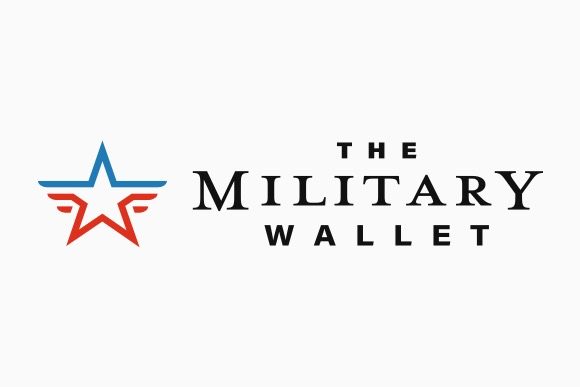VA loans are one of the most valuable benefits available to service members and veterans, as they can make it easier to purchase or refinance a home
VA loans are backed by the Department of Veterans Affairs and allow you to purchase a home with little or no money down.
There are also advantages for veterans who want to refinance their VA loans.
Perhaps the easiest way to refinance a VA loan is with an Interest Rate Reduction Refinancing Loan (IRRRL), or a VA streamline refinance.
Table of Contents
The VA Streamline Refinance Process
The VA created the IRRRL to make it easier for veterans to refinance their current VA loans at a lower interest rate without having to go through as much of the underwriting process as getting a new loan from scratch.
In short, it’s a little faster and more accessible for everyone involved.
This guide will run you through the process and explain why a streamline loan makes sense for veterans who are already using a VA loan..
Benefits of an Interest Rate Reduction Refinancing Loan
The IRRRL is probably the most straightforward refinancing process you will find anywhere.
The VA makes the refinancing process easy for everyone involved.
Because you have already gone through many of the steps to get your initial VA loan, you will not need to repeat them to refinance your VA mortgage.
Here are some benefits of a streamline refinance:
- An IRRRL does not require an appraisal or credit underwriting package.
- Since you already used a VA loan Certificate of Eligibility (COE) to get your current VA loan, the VA does not require a new one. (You may need to provide a copy of your previous COE).
- You can include all refinancing costs in the loan or, by choosing to receive negative points, allow the lender to cover the closing costs.
- You can use any approved VA loan lender to process your IRRRL (but you should shop around to compare interest rates, lender’s fees and closing costs).
While the IRRRL program can be highly beneficial, keep these potential drawbacks in mind:
- When refinancing from an existing VA adjustable-rate mortgage (ARM) loan to a fixed-rate loan, the interest rate may increase.
- The VA strongly urges borrowers to contact several lenders because terms may vary.
- You will not receive any cash from the loan proceeds.
VA Loan Refinance Eligibility
You can only use an Interest Rate Reduction Refinancing Loan if you have already used your VA loan eligibility on the property being refinanced.
The refinance must be a VA-to-VA refinance, and the action will reuse the entitlement you initially used.
A lender will need to see your prior use of entitlement, so they may need a copy of the Certificate of Eligibility. If you use the same lender as your original mortgage, they may still have a copy on file.
How Much Cash Can I Get From a VA Refinance?
The amount of the refinancing loan can not exceed the outstanding balance on the original loan plus allowable costs and fees for closing.
Up to two discount points are also allowable. Additionally, you can add up to $6,000 of improvements made for energy efficiency.
At no time can an individual receive cashback from the streamline refinancing process.
When you originally apply for a VA loan, you must certify that you will occupy the home.
With an IRRRL, you only need to certify that you previously lived in the residence.
VA Streamline Refinance Rates

Refinancing any loan requires thought and consideration of your financial situation now and down the road.
The VA strongly encourages borrowers to seek out the terms from several lenders and compare VA mortgage rates before committing to one.
There can be significant differences between lenders’ loan terms.
Some critical factors to consider are:
- Mortgage interest rate
- Annual percentage rate (APR)
- Loan origination fees (Lender’s Fees)
- Cost of points to reduce interest rate
- Additional fees and closing costs
- Escrow costs (if required)
Sometimes the lowest interest rate isn’t the cheapest loan in the long run. The cost of closing fees, origination fees, points and other expenses can have a major impact on the cost of refinancing.
The latter is especially essential if you roll the closing costs into your mortgage instead of paying them as you go.
For example, many lenders automatically roll expected or required escrow costs into the amount of money you borrow on your mortgage.
This money is required upfront to fund your escrow account to avoid being underfunded for property taxes or insurance.
If you are refinancing, you will receive a refund for the total amount in your escrow account, but not until after you close on your refinance. So it’s usually best to pay the escrow costs upfront if possible instead of adding them to the amount financed.
Adding escrow costs can add several thousand dollars to the amount you are financing, which can add hundreds more in expenses, including the cost of buying points, interest paid and your monthly mortgage payment.
VA Refinance Lenders
Be wary of unsolicited offers from lenders targeting existing VA borrowers with “limited time offers.”
Many of these companies use official-looking seals and company names. Most of them also use language such as “use your veterans benefit to lock in this limited time offer,” or “as a veteran, you have rights to lock in this limited-time benefit.”
These companies want you to believe they are the only ones that can offer you this deal.
The reality is, any mortgage lender authorized to provide a VA loan can also offer a VA IRRRL.
That said, you should consider using a company that is familiar with processing VA loans. The paperwork, requirements and timelines can be different than with conventional VA loans.
So you want to be sure to use a company with enough experience that you won’t have errors or delays in your loan processing.
Which Lender Should You Use?
Many great companies specialize in VA loans. Mortgage rates are highly variable and can vary greatly based on many factors, including the state and county where you live, your credit score, your income, the price of your home, the duration of your loan, whether or not you purchase points to reduce your interest rate, closing costs and many other factors.
Contact several lenders to compare offers, and consider the following when making your decision:
- Mortgage interest rate
- Annual percentage rate (APR)
- Loan origination fees (lender’s fees)
- Cost of points to reduce interest rate
- Additional fees and closing costs
One way to compare your actual savings is to consider your current interest rate compared to your new interest rate.
For example, on a $200,000 30-year mortgage, you would have the following numbers:
- 4.00% – $955 monthly payment (principal and interest Only); $343,739 total payments (including interest)
- 3.25% – $870 monthly payment (principal and interest only); $313,349 total payments (including interest)
- True monthly savings – $85
- Annual savings – $1,020
- Total savings if carried to term — $30,390
So the actual monthly savings on a $200,000 loan is $85. But the increased cash flow and lower monthly payments could have a huge benefit if they allow you to pay for other, more important needs, such as paying off higher interest debt, saving for retirement or college expenses, etc.
How to Choose a VA Refinance Lender
As mentioned earlier, you can use any VA loan lender.
However, you may find it easier to deal with a company that specializes in these types of loans, such as one of the following:
- Any of the major military banks or credit unions, including Navy Federal Credit Union, PenFed or USAA Federal Savings Bank.
- Veterans United Home Loans is one of the top VA loan originators in the US.
Remember, mortgages will vary based on many factors, so compare everything before deciding on the best lender for your needs.
Should I Use a VA Streamline Refinance?
If you already have a VA loan and are considering a refinance, then you should definitely consider a VA streamline refinance.
The process is easier than a conventional mortgage or refinance.
However, be sure to consider all your options, including the total cost of the loan (all closing costs, fees, etc.), whether you should reduce the term of the loan from 30 to 15 years and other factors.
Be careful not to roll too many closing costs into your new loan, as this may cost you more money in the long run
Also, be aware that refinancing from an adjustable-rate mortgage (ARM) to a fixed-rate mortgage may increase your interest rate.
However, it would allow you to permanently lock in your rate, which offers stability in the event interest rates change.
There are always pros and cons, so make sure you understand your own situation entirely before undergoing any modification.
When Not to Use a VA Interest Rate Reduction Refinancing Loan
Remember, you can only use an IRRRL if you already have a VA loan. You also can’t do a cash-out refinance with a streamline refinance.
In some cases, the closing costs, origination fees and other expenses can result in the loan amount being higher than the fair market value of the home.
In these circumstances, the benefit of refinancing may not be in your best interest. If the new loan’s interest rate is not 1-2% lower than the original rate, it may not be worth the refinancing process, and the initial loan may be in your best interest.
There will be lenders that try to add additional closing costs to the loan but know that the VA only requires one fee, the funding fee, for 0.5% of the loan amount.
The funding fee may be paid in cash from the borrowers or rolled into the loan.
Finally, you should also consider refinancing with a conventional loan if you can find a lower interest rate or better terms.
It is always worth it to shop around.
The decision to refinance is a personal one, and a solution that works for one person may not work for another. Shop around for lenders and compare loan terms before committing to a refinance.
USAA Disclosure: Use of the term “member” or “membership” refers to membership in USAA Membership Services and does not convey any legal or ownership rights in USAA. Restrictions apply and are subject to change. To join USAA, separated military personnel must have received a discharge type of “Honorable.” Eligible former dependents of USAA members may join USAA. Bank products provided by USAA Federal Savings Bank, Member FDIC and Equal Housing Lender NMLS ID 401058.

Equal Housing Opportunity. The Department of Veterans Affairs affirmatively administers the VA Home Loan Program by assuring that all Veterans are given an equal opportunity to buy homes with VA assistance. Federal law requires all VA Home Loan Program participants – builders, brokers and lenders offering housing for sale with VA financing – must comply with Fair Housing Laws and may not discriminate based on the race, color, religion, sex, handicap, familial status, or national origin of the Veteran.




Comments:
About the comments on this site:
These responses are not provided or commissioned by the bank advertiser. Responses have not been reviewed, approved or otherwise endorsed by the bank advertiser. It is not the bank advertiser’s responsibility to ensure all posts and/or questions are answered.
Danielle says
Does VA streamline refinance loan require Pest Inspection report for properties in Hawaii?
Ryan Guina says
Hello Danielle,
I do not know what the rules are in this situation. We had to submit proof of pest protection when we purchased our home with a VA Loan. But we didn’t have to do one when we last refinanced with a Streamline Loan.
That said, I cannot speak for specific lender rules, or what is required in HI. I recommend working with your lender and broker for more information. I wish you the best, and thank you for your service.